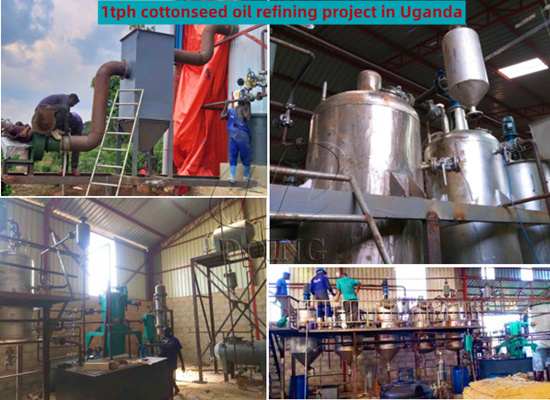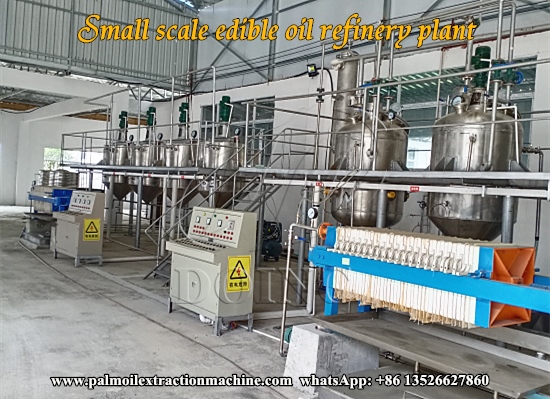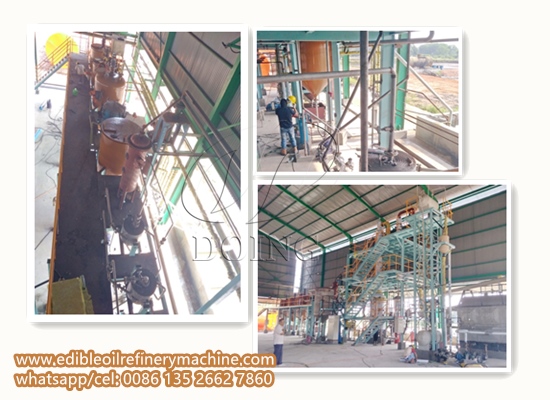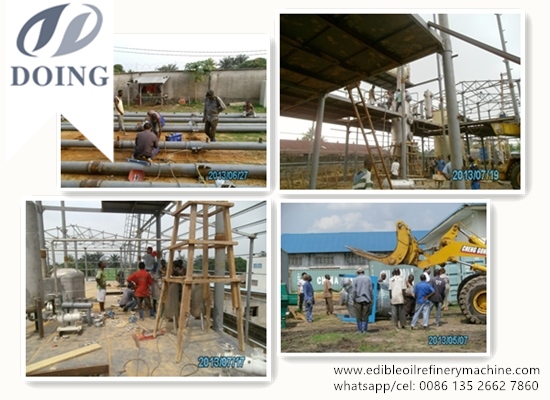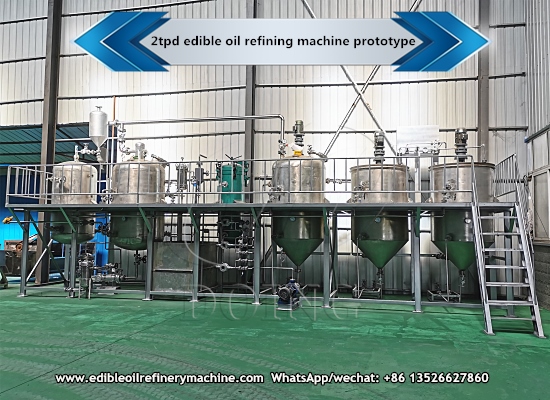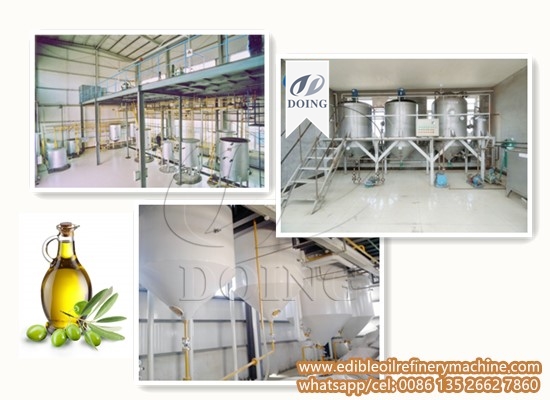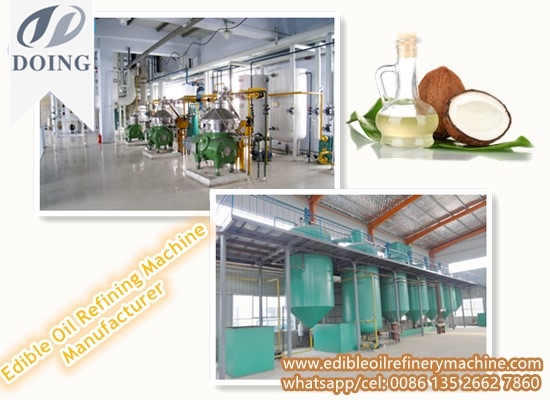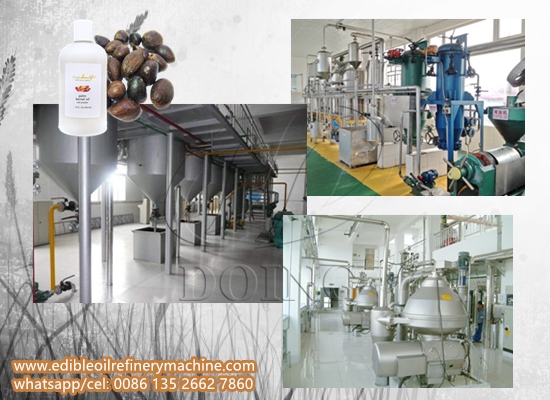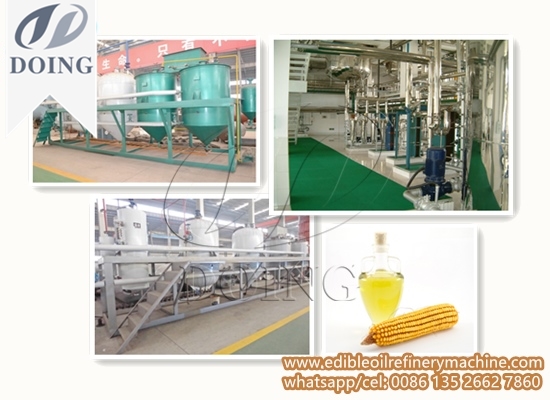How to get high quality refined edible oil?
Crude oil contains many impurities that are not conducive to consumption and storage, such as water, free fatty acids, pigments, fibers, etc. We usually remove impurities in crude oil through refining to obtain refined oil, so how can we obtain high-quality refined oil during the refining process? Below I will give you a detailed explanation through four refined steps.
 Edible oil refined process
Edible oil refined process
1. Hydration degumming
The peptized impurities such as phospholipids in crude oil are hydrophilic to a certain extent. When a certain amount of water or electrolyte solution is added to the crude oil while stirring, the peptized impurities in the crude oil begin to absorb water, swell, and agglomerate to form gels. The ball-like substances, as the water was drained, they also separated from the oil. This is the process of hydration degumming. In this process, in addition to protein, mucus and trace metal ions combined with phospholipids, phospholipids are the main substances that can coagulate and precipitate during hydration degumming. Some crude oil contains some non-hydrophilic peptized impurities. At this time, it is necessary to add food-grade phosphoric acid to make these non-hydrophilic peptized impurities into hydrophilic colloidal impurities and separate them together. Peptized impurities not only affect the stability of oil, but also affect the process effect of oil refining and deep processing. The alkali refining section will promote emulsification and increase the difficulty of operation; the decolorization section will increase the amount of white clay and reduce the decolorization effect. Therefore, peptized impurities must be removed.
 Hydration degumming and alkali refining deacidification
Hydration degumming and alkali refining deacidification
2. Alkali refining deacidification
All kinds of unrefined crude oils contain a certain amount of free fatty acids, which depends on the quality of the oil. The process of removing free fatty acids from oil is called deacidification, especially under high moisture conditions, which is very unfavorable for oil preservation, which will increase the free acid content and reduce the quality of oil.
The main methods of deacidification are alkali refining and distillation. Distillation is also called physical refining. Mainly introduce the alkali refining method. Add a certain concentration and a certain amount of sodium hydroxide, that is, lye. Here we recommend the use of solid alkali to reduce transportation costs. After the water is dissolved, add it to the oil for acid-base neutralization reaction. During the reaction, most of the free fatty acids can be neutralized, thereby forming saponins, which become flocs Sedimentation, it will also take away some other impurities in the process of sedimentation, such as protein, pigment, mucus, etc., so as to obtain refined edible oil with low acid value.
3. Adsorption decolorization
Adsorption decolorization is to use some substances (such as fuller's earth, activated clay, activated carbon, etc.) to have a strong selective adsorption effect on pigments, usually through sufficient stirring to make clay and activated carbon absorb pigments and other impurities in oils, so as to achieve purpose of depigmentation. After the oil is treated by the adsorbent, it can not only improve the color of the oil, remove colloid, but also effectively remove some trace metal ions to prepare for the next section.
 Adsorption decolorization section
Adsorption decolorization section
4. High temperature deodorization
All kinds of vegetable oils have their own unique flavors. After deacidification and decolorization, there will be a small amount of oxides and the smell of residual solvents of clay. The process of removing these bad smells is called deodorization. Under the appropriate air pressure, steam is sprayed through a series of pumps, the oil is fully contacted with the steam under the agitation of the steam, and the steam is evenly dispersed in the oil, taking advantage of the difference in volatility of odorous substances and triglycerides in the oil, Under the condition of high temperature and high vacuum, the odorous substances are removed by steam distillation. We call it steam stripping. The deodorization process is the last step in the refining of most oils. Deodorization can remove the "odor" produced by the oil during processing, such as burnt smell, solvent smell, clay smell, and the smell of the oil itself that is not acceptable to the public.
 High temperature deodorization section
High temperature deodorization section
After the above four steps, most of the impurities in crude oil have been removed, and we have obtained high-quality refined oil, which can be directly sold on the market. Compared with crude oil, it is also more beneficial to people's health.
Henan Glory is an independent technical research and development team, which can provide complete edible oil refining plant and other oil processing machines. Therefore, we can not only provide professional equipment, we are more able to provide customized products and services according to the different needs and situations of our customers to ensure that our products meet the needs of market development. If you have any other questions about edible oil refining machines, please feel free to let us know.
PREV:How much does edible oil refining machine cost?
NEXT:How to start a small edible oil refinery plant in Tanzania?
Leave a message
If you wanna to get more details about How to get high quality refined edible oil?, you can send E-mail to market@doingoilmachine.com . Or you can consult our professional engineers and specialized sales team by leaving a message in below form. We will contact you ASAP. You also can visit our factory in Henan, China.
-
 Henan Glory Secures Central Africa Order for Small Edible Oil Refinery Plant (200kg/d)
Henan Glory Secures Central Africa Order for Small Edible Oil Refinery Plant (200kg/d)
-
 Nigeria: 50TPD Palm Oil Refining & 30TPD Fractionation Equipment Deal Signed
Nigeria: 50TPD Palm Oil Refining & 30TPD Fractionation Equipment Deal Signed
-
 Burundi Client Boosts Oil Quality with 5TPD Palm Oil Fractionation Machine from Henan Glory
Burundi Client Boosts Oil Quality with 5TPD Palm Oil Fractionation Machine from Henan Glory
-
 The soybean oil refining machine has been successfully shipped to Nigeria
The soybean oil refining machine has been successfully shipped to Nigeria
-
 A Nigerian customer successfully placed an order for edible oil refining equipment manufactured by Henan Glory Company
A Nigerian customer successfully placed an order for edible oil refining equipment manufactured by Henan Glory Company
-
 Rwanda customer ordered 5TPD palm oil fractionation machine from Henan Glory Company
Rwanda customer ordered 5TPD palm oil fractionation machine from Henan Glory Company



